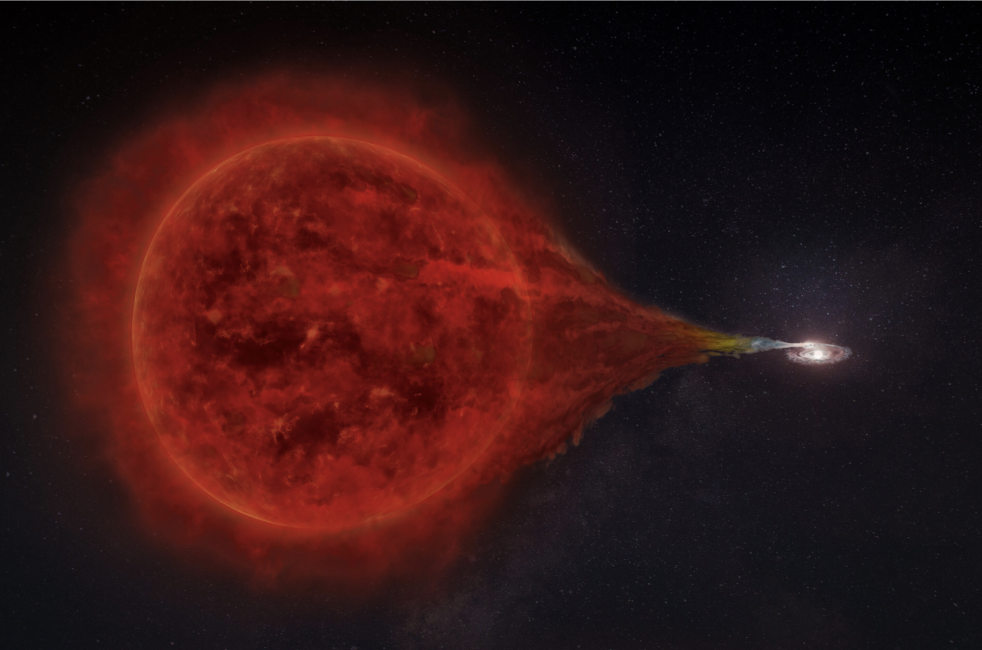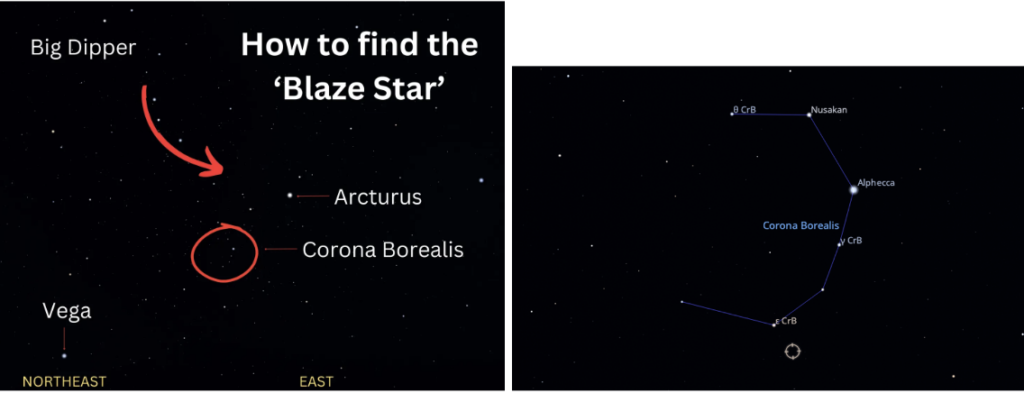3,000 light years away from our solar system lies a binary star system known as T Coronae Borealis. In a binary star system, two stars orbit one another. This star system is special, because it’s about to go nova – meaning it’s about to get a lot brighter for a short period of time. T Coronae Borealis is composed of a red giant star and a white dwarf star. A white dwarf is the leftover core from a star that has already died. It doesn’t have energy being produced. However, since it’s in a system with a star that is still producing energy, the white dwarf is able to take in some of the energy from its companion star. “As part of its end-of-life process, every 80 years the slowly dying red giant expels matter, which the white dwarf sucks onto its surface (Carter, 2024). Once the white dwarf takes in enough matter, it “explodes” and it gets significantly brighter.

This exciting event, which only occurs about every 80 years, will be visible from Earth in the northern hemisphere. It will be visible at some point between now and September for several days. T Coronae Borealis is located towards the east in the constellation Corona Borealis.

Don’t miss out on this once in a lifetime event!
Article written by Arianna Japalucci, astroTAC member.
Works Cited
Carter, Jamie. “A ‘New Star’ to the Naked Eye is Imminent in the Rare Sky Event.”
Forbes. 4 May 2024. https://www.forbes.com/sites/jamiecartereurope/2024/05/04/a-new-star-to-the-naked-eye-is-imminent-in-sky-event-53-times-rarer-than-a-total-solar-eclipse/?sh=a01cf4512323
Max Planck Institute for Physics. “MAGIC Telescopes Observe Nova Explosion.” Phys.org, 14 April, 2022. https://phys.org/news/2022-04-magic-telescopes-nova-explosion.html